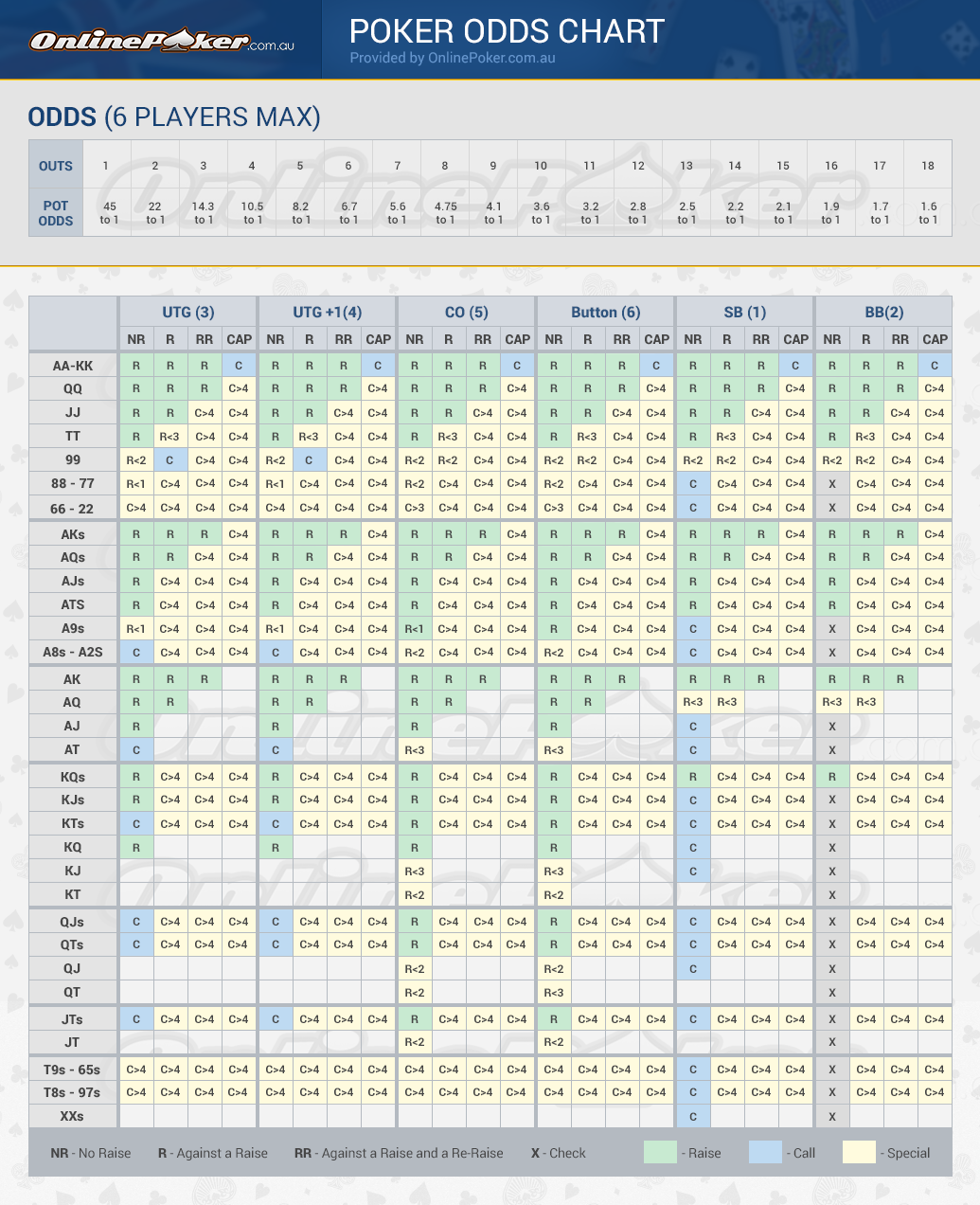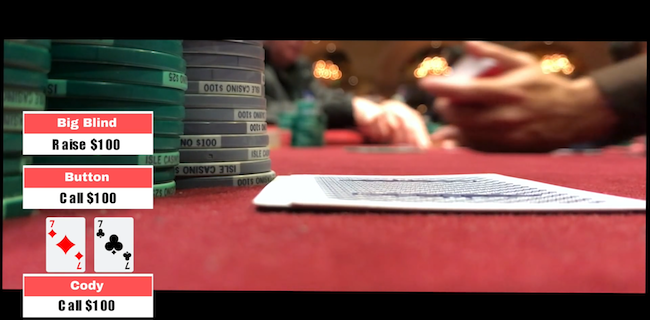Are you good at math? Hmm, thought so. Neither am I.


- Nov 05, 2013 If you’re thinking about playing poker against other players, you need to know about odds. In Texas Hold’em, knowing how your hand stacks up to another player’s hole cards is key. And it’s important pre-flop, before you’ve had the chance to see the community cards.
- This means that the probability of the flop being A K Q in any order is 1/19,600 - which is exactly the same probability as the flop coming something like 2 5 9 in any order. So in total there are 19,600 different possible flops in Texas Hold'em. Probability of specific flops.
- Odds of Making Three of a Kind on the Flop. The odds of making Three of a Kind on the flop will vary depending on the type of preflop hand we have. Odds of making Three of a Kind with a random starting hand – 1.9%. Odds of making Three of a Kind with a pocket pair – 10.8%. Odds of making Three of a Kind with an unpaired starting hand – 1.35%.
For many poker players, doing math calculations is the last thing on their mind when they sit down at the felt. They're there to play and have fun!

Still, poker is more fun when you win, and it helps to know the winning potential of starting cards. Remember, there's a reason for the saying, 'Never draw to an inside straight.'
After the flop betting round, another card is burned from the deck and a fourth community card is exposed. This card is known as the turn (sometimes fourth street). All players still in the hand now have six cards to choose from to make their best five-card Poker hands. There is another round of betting and one more card yet to be exposed. EXPLANATION: Without possible straights and flushes, the only possible way to flop a pair or better is to have the flop hit your hand. So, I calculated the odds of the flop missing you and subtracting it from 100%. The odds of each flop card missing your pocket cards are 44-in-50, 43-in-49, and 42-in-48, respectively.
Because figuring percentages in your head would slow down the game, should you bring a pocket calculator to the table? No way!
Fortunately, some situations repeat quite often in Texas hold 'em, and it's easy to memorize the math involved. Once that's done, you can concentrate on everything else going on at the table.
Today, let's re-examine the math of some common hold 'em situations originally listed in a 2006 LuckyDog Poker column:
— Being dealt any pocket pair in the hole — 6 percent (one in 17) chance. Getting A-A, K-K, Q-Q, or J-J as your starting hole cards — 1.8 percent (one in 56).
— Improving any pocket pair to trips on the flop — 12 percent (one in eight). If you don't make trips on the flop, there's a 9 percent (one in 11) chance of doing so on the turn and river cards.
— A no-pair starting hand improving to a pair on the flop (either card) — 32 percent (one in three).
— Completing an open-ended straight after the flop — 34 percent (one in three). For instance, you hold 10-9, the flop is J-8-2, and the last two cards are 4-7.
— Being dealt suited hole cards (two spades of any rank, for example) — 24 percent (one in four). Being dealt suited connectors such as Q-J of hearts — 4 percent (one in 25).
— Hitting two cards of your suit on the flop — 11 percent (one in nine). Completing a flush after two cards of your suit come on the flop — 39 percent (one in 2.6).
— Being dealt A-K to start — 1.2 percent (one in 83). With A-K in the pocket, hitting an ace or king by the river — 50 percent (one in two).
These numbers identify your chances of receiving certain starting cards and hitting specific hands, but that's not the whole story. Knowing these percentages allows you to calculate 'pot odds,' which gives you a mathematical reason for staying or folding.
For example, let's say after the flop you have an open-ended straight draw with a 34 percent (one in three) chance of making the straight by the end of the hand — 17 percent (one in six) chance of hitting on the turn card, plus 17 percent again to hit on the river.
In this case, as long as there is five times as much in the pot as the amount you must put in on a single bet, you're getting sufficient pot odds to stay in. In low-stakes limit games, calling usually is automatic. In no-limit, however, an opponent's big bet often negates your odds and you should fold.

Now, about those inside straight draws: Is it true you should 'never draw to an inside straight?' Actually, no!
Sure, most of the time you should fold because the chances of hitting your straight on the next card are slim (11 to one against). But on rare occasions, you'll have the proper pot odds to make the draw. Do the math!
Poker Odds Before The Flop Game
E-mail your poker questions and comments to [email protected] for use in future columns. To find out more about Russ Scott and read previous LuckyDog Poker columns, visit creators.com or luckydogpoker.com.